- Home
- John Sandford
Saturn Run
Saturn Run Read online
ALSO BY JOHN SANDFORD
Rules of Prey
Shadow Prey
Eyes of Prey
Silent Prey
Winter Prey
Night Prey
Mind Prey
Sudden Prey
The Night Crew
Secret Prey
Certain Prey
Easy Prey
Chosen Prey
Mortal Prey
Naked Prey
Hidden Prey
Broken Prey
Dead Watch
Invisible Prey
Phantom Prey
Wicked Prey
Storm Prey
Buried Prey
Stolen Prey
Silken Prey
Field of Prey
Gathering Prey
KIDD NOVELS
The Fool’s Run
The Empress File
The Devil’s Code
The Hanged Man’s Song
VIRGIL FLOWERS NOVELS
Dark of the Moon
Heat Lightning
Rough Country
Bad Blood
Shock Wave
Mad River
Storm Front
Deadline
G. P. PUTNAM’S SONS
Publishers Since 1838
An imprint of Penguin Random House LLC
375 Hudson Street
New York, New York 10014
Copyright © 2015 by John Sandford
Penguin supports copyright. Copyright fuels creativity, encourages diverse voices, promotes free speech, and creates a vibrant culture. Thank you for buying an authorized edition of this book and for complying with copyright laws by not reproducing, scanning, or distributing any part of it in any form without permission. You are supporting writers and allowing Penguin to continue to publish books for every reader.
Library of Congress Cataloging-in-Publication Data
Sandford, John, date.
Saturn run / John Sandford, Ctein.
p. cm.
ISBN 978-0-698-41167-8
1. Space ships—Fiction. 2. Quests (Expeditions)—Fiction. I. Ctein, photographer. II. Title.
PS3569.A516S28 2015 2015024637
813'.54—dc23
This is a work of fiction. Names, characters, places, and incidents either are the product of the authors’ imaginations or are used fictitiously, and any resemblance to actual persons, living or dead, businesses, companies, events, or locales is entirely coincidental.
Version_1
CONTENTS
Also by John Sandford
Title Page
Copyright
Dedication
Chapter 1
Chapter 2
Chapter 3
Chapter 4
Chapter 5
Chapter 6
Chapter 7
Chapter 8
Chapter 9
Chapter 10
Chapter 11
Chapter 12
Chapter 13
Chapter 14
Chapter 15
Chapter 16
Chapter 17
Chapter 18
Chapter 19
Chapter 20
Chapter 21
Chapter 22
Chapter 23
Chapter 24
Chapter 25
Chapter 26
Chapter 27
Chapter 28
Chapter 29
Chapter 30
Chapter 31
Chapter 32
Chapter 33
Chapter 34
Chapter 35
Chapter 36
Chapter 37
Chapter 38
Chapter 39
Chapter 40
Chapter 41
Chapter 42
Chapter 43
Chapter 44
Chapter 45
Chapter 46
Chapter 47
Chapter 48
Chapter 49
Chapter 50
Chapter 51
Chapter 52
Chapter 53
Chapter 54
Chapter 55
Chapter 56
Chapter 57
Chapter 58
Chapter 59
Chapter 60
Chapter 61
Chapter 62
Chapter 63
Chapter 64
Chapter 65
Epilogue
Authors’ Note
CTEIN DEDICATES THIS NOVEL TO PAULA BUTLER
SANDFORD DEDICATES IT TO BEN, DAN, AND GABRIEL CURTIS, HIS GRANDSONS
1.
FEBRUARY 9, 2066
From ten kilometers out, the Sky Survey Observatory looked like an oversized beer can. Yellow-white sunlight glittered from the can’s outward side, while the other half was a shifting fun house reflection of the pale blues and pearly cloud streaks of the earth, a thousand kilometers below.
The can was not quite alone: an egg-shaped service module, human-sized, encrusted with insectile appendages, ports, windows, and cameras, was closing in on it. Storage lockers and canisters surrounded the base of the egg. Had there been any air around it, and anything with ears, the faint twang of country music might have been heard vibrating through its ice-white walls: “Oh, my ATV is a hustlin’ on down the line, and them tofu critters are looking mighty fine. . . .”
The handyman was making a house call.
The Sky Survey Observatory carried four telescopes: the Big Eye, the Medium Eye, the Small Eye, and Chuck’s Eye, the latter unofficially named after a congressman who slipped the funding into a veto-proof Social Security bill. The scopes stared outward, assisted by particle and radiation detectors, looking for interesting stuff.
All of the SSO’s remotely operable telescopes, radio dishes, and particle sensors, all the digital cameras and computers, all the storage systems and fuel tanks and solar cells, lived at the command of astronomers sitting comfortably in climate-controlled offices back on the ground.
Until the observatory broke. Then somebody had to go there with the metaphorical equivalent of a screwdriver.
One of the groundhuggers called, “Can you see it?”
Joe Martinez said into his chin mike, “Yeah, I can. Holy cow. Something really whacked that motherfucker.”
“What! What? Joe, what—”
“Just messin’ with you, Bob.”
“Hey, Joe? I’m pushing the button that cuts off your air.”
“Didn’t know you had one of those.”
“You don’t mess with astronomers, Joe. Cutting the air in three-two-one . . .”
—
Martinez was a handyman; his official title was chief of station operations, which meant that he kept the place running.
He hadn’t had much to do except drink coffee and read the current Guitar Riffs for the last couple of hours, waiting to make the approach to the SSO. Barring some weird million-to-one mishap, his trajectory was fixed by the laws of physics and the impulse from the low-velocity rail-gun at the station; the computer said he was exactly on track. He sucked down some more of the decaf, his fingers unconsciously tapping out a counterpoint to the Blue Ridge Bitches, the band he currently favored.
Martinez wasn’t a scientist. He did mechanics and electronics, a little welding, a lot of gluing, the occasional piece of plumbing, and sti
ll more gluing. He had a degree in electromechanical engineering, but there were days when he thought he should’ve gotten one in adhesives. His engineering and academic background, combined with an instinctive love of machine tools, made him a quick study, but he didn’t have much interest in building new machines.
On the ground, he messed around with electric guitars, video games, propeller-driven airplanes and wooden speedboats. He loved real hardware even more than he loved his computer, and he did love his computer. If he could build it, fix it, refurbish it, or just plain tinker with it, he was happy.
But he was happiest up in the sky, where he did a little of everything; he was the world’s best-paid handyman.
Bob Anderson came back: “What do you think?”
“I can’t see anything,” Martinez said. “I mean, nothing unusual.”
“Good. You going manual?”
“As manual as I can, anyway. And that would be . . . now.”
He flipped the arming switch on the thruster joystick. Checking the intercept lidar—less than five meters a second of residual velocity, very good—he played the cradle’s thrusters. Practice born of hundreds of runs made his actions nearly unconscious, like riding a bicycle. His eyes took in the instrument readings while his fingers responded with bursts of thrust. It was safer, he’d told Amelia, his third ex-wife, than driving to work.
“What happens,” she’d asked, “if everything fails? I mean, if everything fails down here, when you’re driving to work, you go in a ditch. What if everything fails out there?”
Well, then, he’d said, he’d get a free tour of the universe and would still be on tour when the sun finally died, a few billion years from now. She hadn’t laughed. Then or later.
Martinez had. As the shrinks had noted, isolation didn’t worry him.
“Radar says you’re there,” said Anderson.
“Close. Just a bit further.”
—
The egg’s attitude matched that of the SSO—there wasn’t any particular “upright” in space, but there had been when the can was put together on Earth, and the lettering on the side of it appeared in the proper orientation to Martinez’s eyes. There’d been few visitors to read the lettering—in the eleven years that the observatory had been functioning, there’d been thirty visits, by fewer than a half-dozen different people, one egg at a time.
Of those thirty visits, Martinez had made eighteen. Most of the instruments and scopes were modular, boosted up into space as self-contained operational units, ready for deployment.
Some assembly was required. The instruments had to be fitted into the can, periodically serviced, and upgraded as new and better cameras, computers, and memories were invented. The SSO was the finest piece of astronomical machinery ever produced, and Americans—or the astronomical fraction of them—were committed to making sure it was equipped with the best the taxpayers could afford.
On this trip, Chuck’s Eye was getting an eye exam along with a new camera: Chuck had developed a tic. The vibration could have come from one of the servos inside the camera housing. It could have come from a wire that had worked free from its housing because of the heat-cold cycles. It could have come from any number of things, but whatever the cause, it had to be stopped. The cost of stopping it could vary from nothing at all, to a million bucks or so. The people on the ground were praying for “nothing at all,” since Congress was in one of its semi-decadal spasms of cost-cutting.
Martinez’s right hand played on the sensor panel, bringing up his work tools and assists. At the index finger’s command, power flowed to the servos on the manipulator arms and energized the tactile gloves. The thumb flipped a switch and dozens of tiny directional spotlights flicked on all over the exterior of the egg, banishing the darkness between the egg and the can—in space, flashlights were almost as vital as oxygen.
His right little finger swiveled the lights, bringing them to bear. Years of misspent youth at game consoles had given him reflexes and manual dexterity that a jazz saxophonist might have envied. As his right hand continued to play the instruments, his left worked the joystick, bringing the egg in close and slow. He circled the can one time, making a vid, then eased the egg to a stop relative to the observatory.
Slowly, slowly, a mere millimeter a second, that was the trick. There wasn’t any danger to the observatory; the SSO’s own navigation computers could easily compensate for a bump, firing the observatory’s thrusters and running its orientation gyros to bring it back on point. But why waste the can’s limited fuel supply on a sloppy docking?
With the very faintest snick, the grappler on the egg latched onto one of the docking sockets that were all over the can’s skin. This particular socket was adjacent to the Chuck’s Eye instrument hatch. Once tied in, Martinez ran a last confirming test on the safety and security cameras. Everything inside and out was recorded during one of these house calls, because you never knew when a detail you missed might just save the job . . . or your life.
“We show you docked,” Bob said. “Good job. Barely a jiggle.”
“That’s why you hired a pro,” Martinez said. “You looking at the vid?”
“Yeah, we’re running it against the last scan, and so far we see no changes, no anomalies,” Bob said. Three seconds of silence. “Okay, the scan is finished, we see nothing at all on the exterior.”
“Good. Go ahead and cut the juice.”
“Cutting the juice: juice is cut. You’re clear.”
—
Killing the SSO’s power was a safety precaution, not for Martinez, who was well isolated and insulated in his egg, but for Chuck’s Eye: an accidental short or surge during servicing could result in one of those million-dollar repairs the groundhuggers were praying to avoid.
A moment later, a ground-based scope specialist named Diana Pike, whom Joe had never met, but with whom he often worked, called back and said in her familiar southern accent, “We’re good, Joe. Want to look for that tic, first?”
“Hey, Di. Yeah, I’m putting some pucks out now.” Martinez used a spidery remote arm to drop a few micro-seismometer pucks on the can’s skin and the outer case of Chuck’s Eye. The bottom of the pucks had a layer of an electro-phosphoprotein adhesive, a synthetic based on the natural adhesive used by barnacles. With a tiny electrical current running through the adhesive, it would stick to almost anything; when the current shut off, the adhesive effect vanished. They were called Post-its. What that had to do with yellow pop-up reminders on a workslate screen was anybody’s guess.
“Okay, Di, we’re set up here,” Martinez called. “Give me a rattle.”
“Here y’all go,” Pike said. “Three-two-one. Now.”
Two opposing thrusters fired on the can, each for just a tenth of a second and so closely spaced that a human eye couldn’t have told them apart. The can shuddered.
“Okay. We’re cycled. You see that?”
Martinez said, “Yeah, yeah, I see it.”
—
Martinez was watching his monitor readouts—the people on the ground were seeing the same thing—where the reports from the micros were popping up, giving him a directional reading on the vibration. It was near the surface of the superstructure, which was good, but outside the seismo array. “I’m gonna have to juggle some pucks,” Martinez said. “Wait one.”
He moved his micros, and called back to Pike: “Give me another cycle.”
“Cycling, three-two-one. Now. Cycled.”
Martinez looked at his monitor and called back, “It’s right near the surface. I’d say it’s between walls. I’m repositioning the pucks and moving a scope out to take a look.”
“It’s the insulating foam.” Pike was hopeful.
“Probably. I’m moving the pucks . . .”
Another shot and the micros gave him a precise location, within a half centimeter of the source of the vibration. He moved a
macro lens in and looked at the surface of the observatory. “There’s no external defect,” he said.
“Good,” Anderson said. If it had been a micrometeorite, the repairs could have been a bigger problem. They’d never had one penetrate both skins, but the possibility was always there.
“Gonna cut a hole,” Martinez said.
The process took an hour. Martinez drilled a three-millimeter hole in the meteorite barrier, then peeked inside with a fiber optic. As they’d suspected, some of the foam used as insulation between the two walls had shaken loose on Chuck’s Eye. There’d probably been a fracture during construction, or one created when the can was boosted into space; years of heat-cold cycles had finally shaken it loose. Martinez gave it a new shot of foam, specially formulated for this precise repair—they’d done three others just like it—sealed it with a carbon-fiber patch, and was done.
That had been the tricky bit. The next part, a monkey could do:
“Breaking out the camera package,” Martinez said.
“Okay. Got you down for the package extraction.”
—
The new package for Chuck’s Eye was less a single instrument than a spider’s-head complex of primary and secondary eyes, operating at all wavelengths from the mid-infrared to the far ultraviolet. Chuck’s Eye was like the scout that ran ahead of an expedition in the Old West, taking in a wide field of view and maintaining a lookout for unusual objects and events. The bigger, more impressive Eyes would do the research that mattered, but Chuck’s Eye would be the first to catch a new supernova or gamma ray burst, or whatever else might show up.
The cameras were modular and self-contained, and the new camera module looked exactly like the old one. Joe yanked the old one, slipped the new one into the rack, flipped the locking clamps, and pinged Anderson:
“I got the old camera package out of the rack and the new one seated. It looks fine. Bob, you can power up again. Everything looks good here.”
“Looks good here, too. Powering up.”
And it was good. The repairs fell into the “nothing-at-all” category. Another of the mission scientists came on and said, “That’s nice work, Joe. We’ve run fifty cycles, got no vibes, and the new camera is online. You can go on home.”
“I’m gone,” Martinez said.

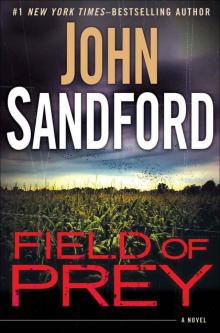 Field of Prey
Field of Prey The Best American Mystery Stories 2017
The Best American Mystery Stories 2017 Mad River
Mad River Storm Front
Storm Front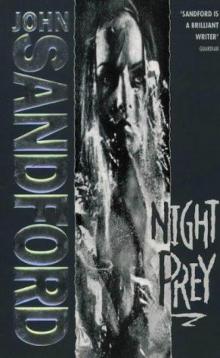 Night Prey
Night Prey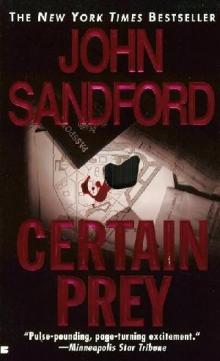 Certain Prey
Certain Prey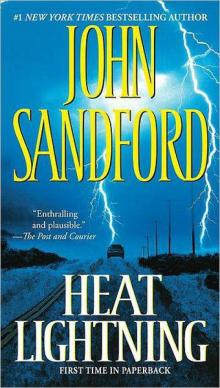 Heat Lightning
Heat Lightning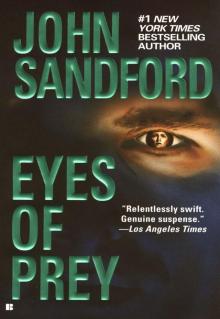 Eyes of Prey
Eyes of Prey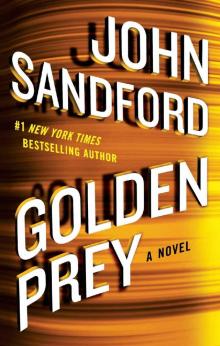 Golden Prey
Golden Prey Lucas Davenport Novels 6-10
Lucas Davenport Novels 6-10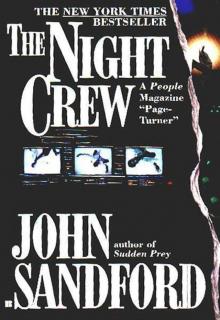 The Night Crew
The Night Crew Broken Prey
Broken Prey Mortal Prey
Mortal Prey Dark of the Moon
Dark of the Moon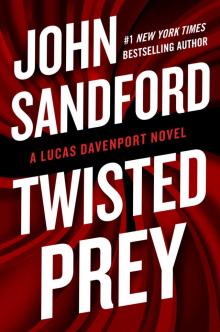 Twisted Prey
Twisted Prey Stolen Prey
Stolen Prey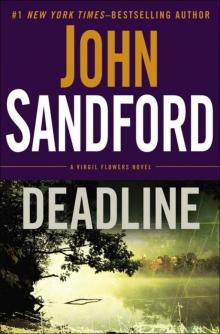 Deadline
Deadline Secret Prey
Secret Prey Rules of Prey
Rules of Prey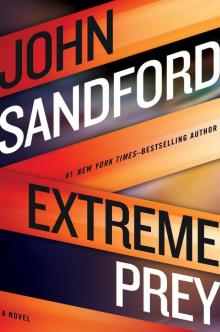 Extreme Prey
Extreme Prey Bad Blood
Bad Blood Gathering Prey
Gathering Prey Rough Country
Rough Country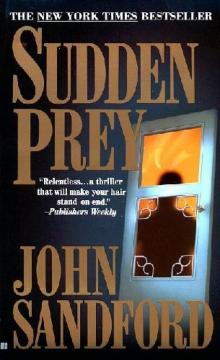 Sudden Prey
Sudden Prey Silken Prey
Silken Prey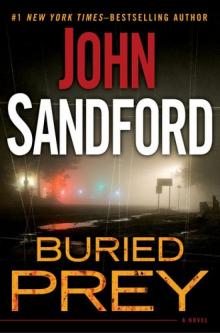 Buried Prey
Buried Prey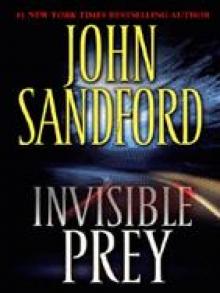 Invisible Prey
Invisible Prey Silent Prey
Silent Prey Deep Freeze
Deep Freeze Bloody Genius
Bloody Genius Naked Prey
Naked Prey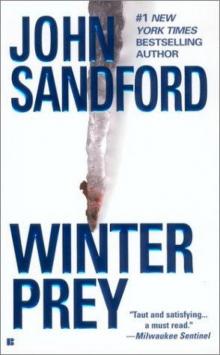 Winter Prey
Winter Prey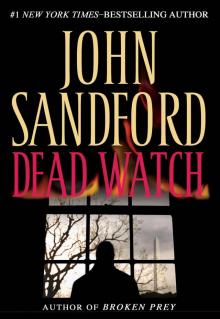 Dead Watch
Dead Watch Escape Clause
Escape Clause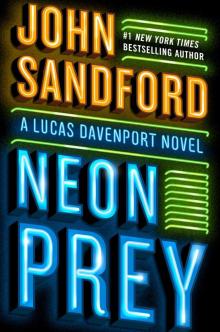 Neon Prey
Neon Prey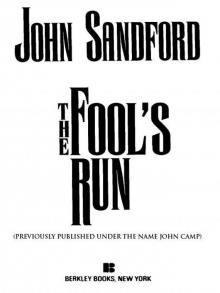 The Fool's Run
The Fool's Run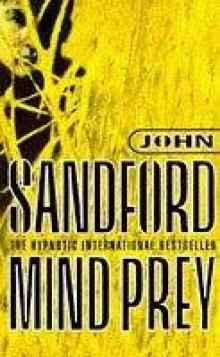 Mind Prey
Mind Prey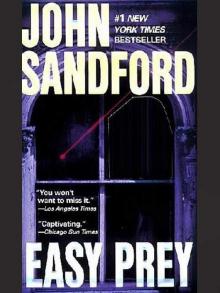 Easy Prey
Easy Prey The Devil's Code
The Devil's Code Chosen Prey
Chosen Prey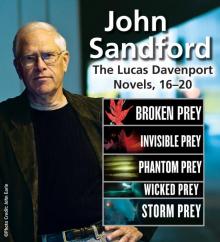 The Lucas Davenport Collection, Books 11-15
The Lucas Davenport Collection, Books 11-15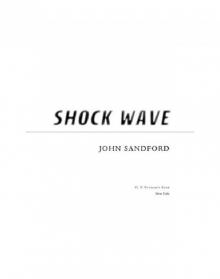 Shock Wave
Shock Wave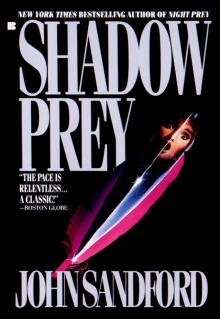 Shadow Prey
Shadow Prey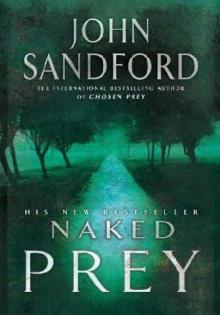 Naked Prey ld-14
Naked Prey ld-14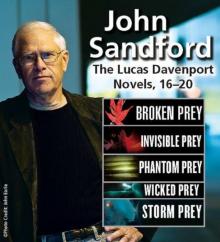 Lucas Davenport Novels 16-20
Lucas Davenport Novels 16-20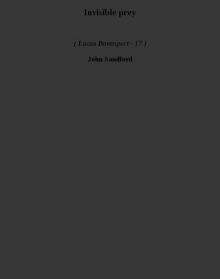 Invisible prey ld-17
Invisible prey ld-17 Lucas Davenport Collection: Books 11-15
Lucas Davenport Collection: Books 11-15 Masked Prey
Masked Prey![[Prey 11] - Easy Prey Read online](http://i1.bookreadfree.com/i/03/22/prey_11_-_easy_prey_preview.jpg) [Prey 11] - Easy Prey
[Prey 11] - Easy Prey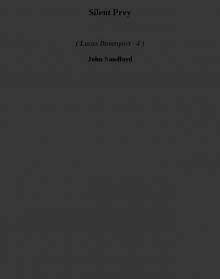 Silent Prey ld-4
Silent Prey ld-4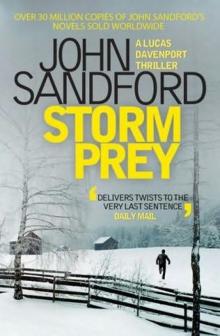 Storm prey ld-20
Storm prey ld-20 Eyes of Prey ld-3
Eyes of Prey ld-3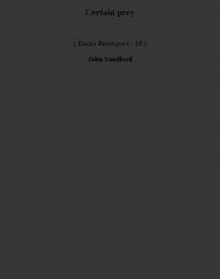 Certain prey ld-10
Certain prey ld-10 Lucas Davenport Collection
Lucas Davenport Collection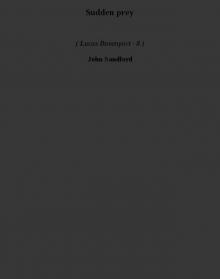 Sudden prey ld-8
Sudden prey ld-8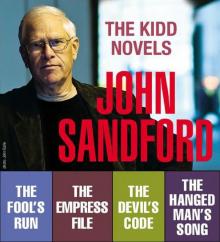 Kidd and LuEllen: Novels 1-4
Kidd and LuEllen: Novels 1-4 Silken Prey ld-23
Silken Prey ld-23 Mad River vf-6
Mad River vf-6 Bad blood vf-4
Bad blood vf-4 Broken Prey ld-16
Broken Prey ld-16 Stolen Prey p-22
Stolen Prey p-22 Night Prey ld-6
Night Prey ld-6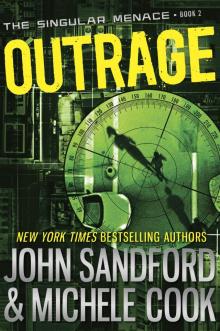 Outrage
Outrage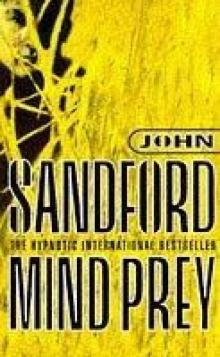 Mind prey ld-7
Mind prey ld-7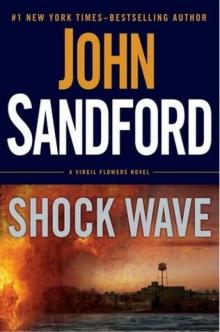 Shock Wave vf-5
Shock Wave vf-5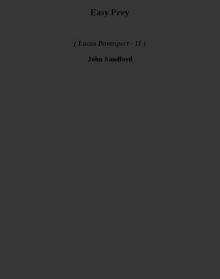 Easy Prey ld-11
Easy Prey ld-11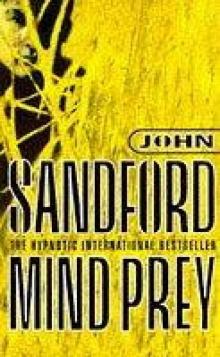 Prey 7 - Mind Prey
Prey 7 - Mind Prey Winter Prey ld-5
Winter Prey ld-5 Holy Ghost
Holy Ghost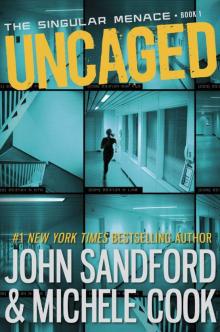 Uncaged
Uncaged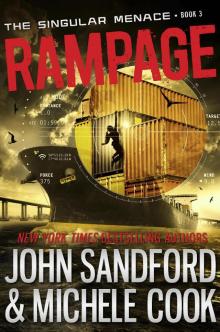 Rampage
Rampage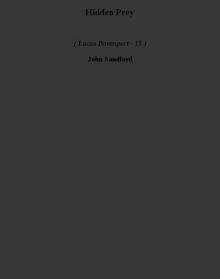 Hidden Prey ld-15
Hidden Prey ld-15 Buried Prey p-21
Buried Prey p-21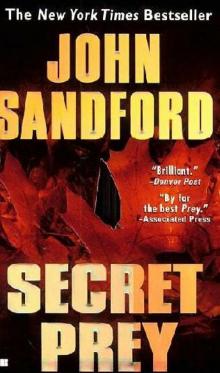 Secret Prey ld-9
Secret Prey ld-9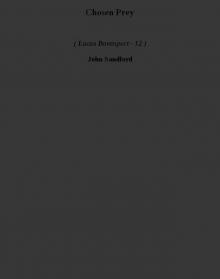 Chosen Prey ld-12
Chosen Prey ld-12 Phantom prey ld-18
Phantom prey ld-18 Mortal Prey ld-13
Mortal Prey ld-13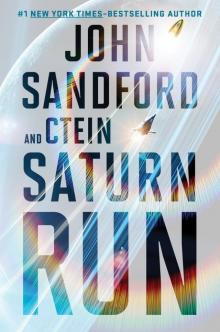 Saturn Run
Saturn Run Wicked Prey
Wicked Prey The Hanged Man’s Song
The Hanged Man’s Song Rough country vf-3
Rough country vf-3 Prey 25 - Gathering Prey
Prey 25 - Gathering Prey